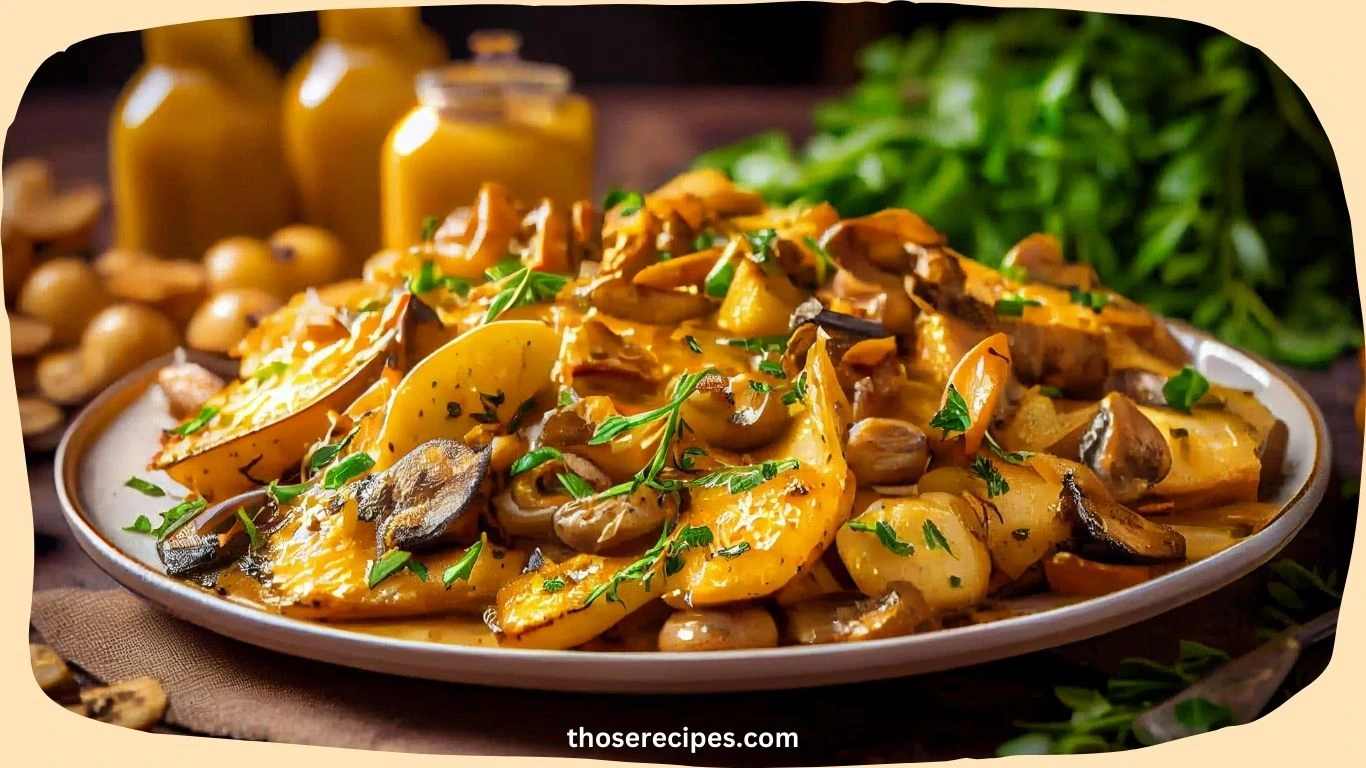Table of Contents
Introduction
If you’ve been looking for a unique ingredient to elevate your culinary creations, look no further than the lion’s mane mushroom recipe. Renowned for its delicate seafood-like flavor and meaty texture, Lion’s Mane mushrooms have become a favorite among food enthusiasts and health-conscious cooks alike. Not only does this mushroom offer a versatile foundation for a variety of dishes, but it also packs a powerful nutritional punch, making it a smart choice for those aiming to incorporate wholesome ingredients into their meals.
Imagine savoring a dish that feels indulgent yet nourishing, with every bite offering a hint of umami and natural richness. Whether you’re a seasoned chef or a beginner in the kitchen, preparing a lion’s mane mushroom recipe is an adventure in flavor and creativity. This mushroom is not just an ingredient—it’s a conversation starter, a health booster, and a gourmet delight rolled into one.
In this guide, we’ll explore everything you need to know about Lion’s Mane mushrooms. From understanding their unique qualities and health benefits to learning how to cook them perfectly, this article will empower you to create delicious recipes that will impress your family and friends. Let’s dive in and unlock the culinary potential of this extraordinary mushroom.
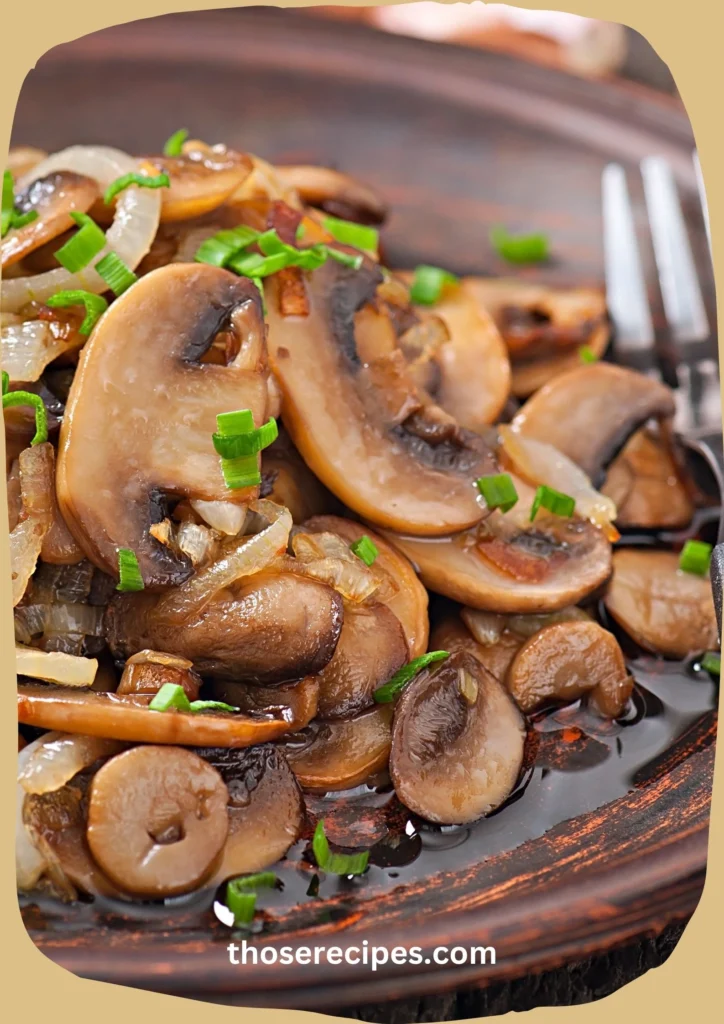
What Is lion’s mane mushroom recipe?
When you hear about gourmet ingredients, the Lion’s Mane mushroom might not immediately come to mind, but it’s gaining popularity for good reason. This unique mushroom, scientifically known as Hericium erinaceus, stands out with its fluffy, cascading appearance that resembles a lion’s mane. Beyond its visual appeal, the mushroom boasts a mild, slightly sweet taste with a texture often compared to crab or lobster, making it a sought-after ingredient for creating a flavorful lion’s mane mushroom recipe.
Appearance and Taste
Lion’s Mane mushrooms are not your typical fungi. Their shaggy white tendrils give them an almost whimsical look, but their flavor is what truly shines. When cooked, they develop a tender, meaty texture that absorbs seasonings beautifully, making them perfect for sautéing, roasting, or even frying.
Nutritional Benefits
Adding Lion’s Mane mushrooms to your recipes doesn’t just elevate taste—it boosts nutritional value too. These mushrooms are rich in antioxidants, protein, and dietary fiber, making them an excellent addition to a balanced diet. They’re also celebrated for their potential brain-boosting and immune-enhancing properties, thanks to compounds like hericenones and erinacines.
Whether you’re a health-conscious cook or someone who loves experimenting in the kitchen, incorporating this mushroom into your dishes offers a wealth of culinary and health benefits.
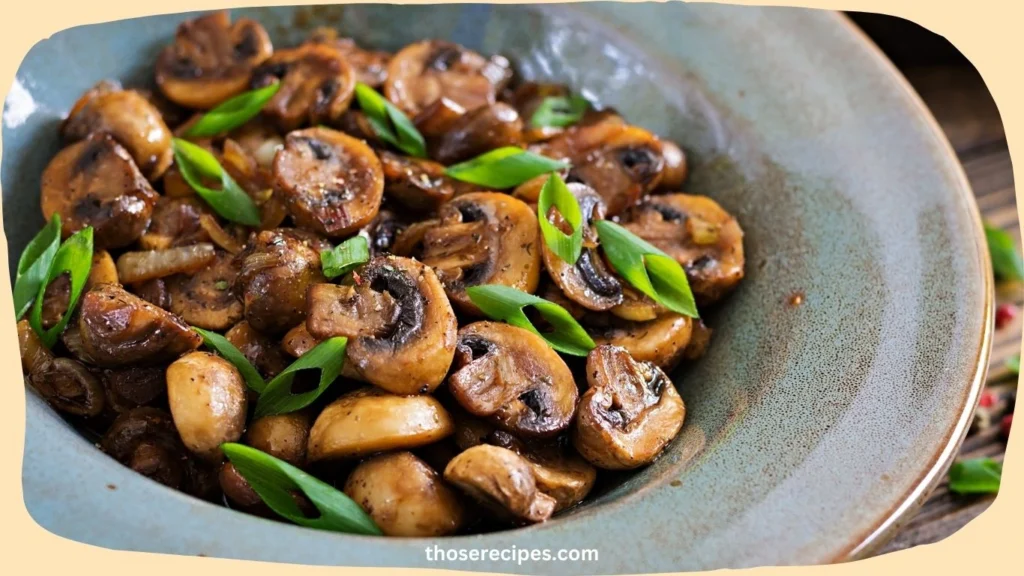
How to Prepare lion’s mane mushroom recipe
Preparing Lion’s Mane mushrooms properly is essential for achieving the best flavor and texture in your lion’s mane mushroom recipe. These delicate fungi require a gentle touch and a few simple steps to make them shine in your dishes.
Cleaning and Prepping
Unlike some mushrooms that thrive in muddy environments, Lion’s Mane mushrooms are relatively clean. However, it’s crucial to remove any dirt or debris before cooking. Avoid washing them directly under running water, as they can absorb moisture and become soggy. Instead, use a damp cloth or a soft brush to gently clean the surface.
Once cleaned, trim off any tough or browned areas, usually found at the base where the mushroom attaches to its growing medium. These sections are often a bit woody but can still be used for stocks or broths.
Cutting and Slicing
Lion’s Mane mushrooms have a unique texture that can be easily adapted for different recipes. For a chunky, meat-like consistency, you can tear them into bite-sized pieces using your hands. This method works well for stir-fries or sautés. If you prefer a more uniform appearance, use a sharp knife to slice them into even rounds or strips.
Cooking Methods
The beauty of a lion’s mane mushroom recipe lies in its versatility. Here are some common cooking techniques:
- Sautéing: Heat a skillet with a drizzle of olive oil or butter, add the mushrooms, and cook over medium heat until they’re golden brown. This method enhances their natural umami flavor.
- Roasting: Toss the mushrooms with olive oil, salt, and pepper, then roast them in the oven at 375°F (190°C) for 20–25 minutes. Roasting brings out their sweetness and adds a subtle crispiness.
- Pan-Frying: If you’re aiming for a crispy exterior, coat the mushrooms lightly with flour or breadcrumbs and fry them in a hot pan. This method is perfect for appetizers or as a topping for salads.
Tips for Best Results
- Always start with a hot pan to prevent the mushrooms from becoming rubbery.
- Use minimal oil to avoid overwhelming their delicate flavor.
- Add seasonings like garlic, soy sauce, or herbs toward the end of cooking to enhance their taste without overpowering them.
Mastering the preparation of Lion’s Mane mushrooms ensures that your lion’s mane mushroom recipe turns out delicious every time, highlighting the unique qualities of this gourmet ingredient.
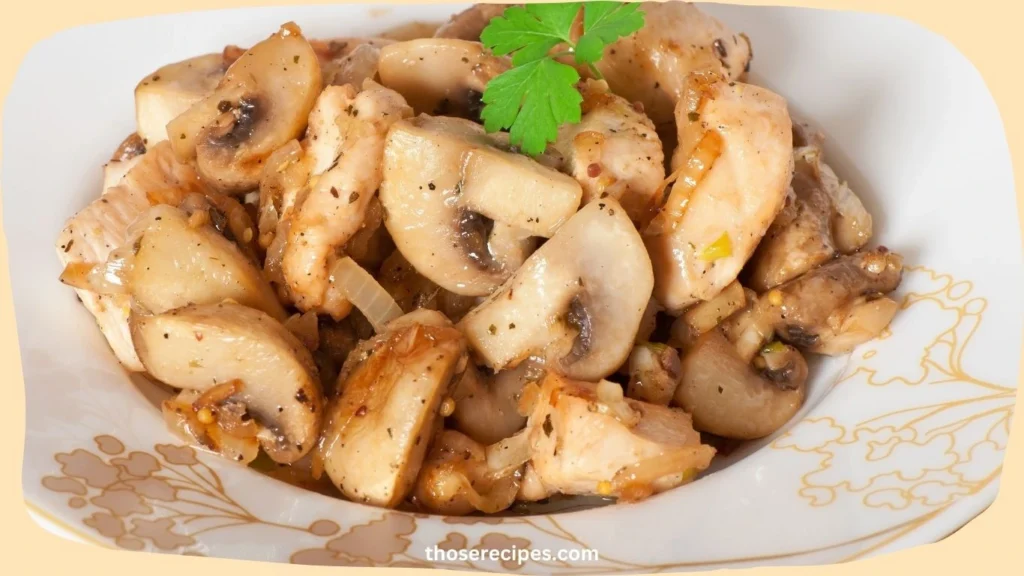
lion’s mane mushroom recipe (Main Section)
Crafting the perfect lion’s mane mushroom recipe begins with the right ingredients and simple techniques that allow the mushroom’s natural flavor to shine. Below, we’ve outlined a versatile and delicious recipe that’s sure to become a favorite at your table.
Ingredients for lion’s mane mushroom recipe
| Ingredient | Quantity | Notes |
| Lion’s Mane Mushrooms | 300g | Fresh and cleaned |
| Olive Oil | 2 tbsp | Extra virgin preferred |
| Garlic | 2 cloves | Minced |
| Soy Sauce | 1 tbsp | Low-sodium option optional |
| Lemon Juice | 1 tsp | Freshly squeezed |
| Salt & Pepper | To taste | Adjust seasoning as needed |
Step-by-Step Instructions
- Prepare the Mushrooms
- Begin by cleaning the Lion’s Mane mushrooms as described earlier. Once clean, tear them into bite-sized pieces or slice them evenly, depending on your preference.
- Heat the Pan
- Heat a large skillet over medium heat and add the olive oil. Allow the oil to warm for about 30 seconds before adding the mushrooms.
- Cook the Mushrooms
- Place the mushrooms in the pan in a single layer. Cook them undisturbed for 3–4 minutes to develop a golden-brown crust. Flip them over and repeat on the other side.
- Add Garlic and Seasonings
- Reduce the heat to low, then add the minced garlic. Sauté for 1–2 minutes until fragrant. Add soy sauce, lemon juice, salt, and pepper, stirring well to coat the mushrooms.
- Serve and Enjoy
- Remove the pan from heat and transfer the mushrooms to a serving plate. Garnish with fresh herbs like parsley or thyme, if desired. Serve as a side dish, over rice, or as a topping for pasta.
Cooking Notes
- For an extra burst of flavor, consider adding a sprinkle of smoked paprika or chili flakes during the sautéing process.
- If you’re preparing this dish for a vegan menu, opt for coconut aminos instead of soy sauce for a slightly sweeter twist.
This straightforward lion’s mane mushroom recipe showcases the mushroom’s tender texture and rich, savory flavor, making it a standout choice for any meal.
Variations of lion’s mane mushroom recipe
One of the best aspects of a lion’s mane mushroom recipe is its versatility. This mushroom adapts beautifully to a variety of cuisines and cooking styles, allowing you to experiment and create unique dishes that suit your taste. For instance, if you enjoy exploring fusion cuisines, you might find inspiration from this flavorful taco rice recipe to pair the delicate textures of Lion’s Mane mushrooms with a vibrant mix of flavors, making your meals even more exciting.
Vegan-Friendly Option
For those following a plant-based diet, Lion’s Mane mushrooms are an excellent substitute for seafood or meat. Replace butter with coconut oil or olive oil, and add a splash of coconut milk for a creamy, dairy-free twist. You can also toss the cooked mushrooms with quinoa or roasted vegetables to create a satisfying vegan bowl.
Soup or Stew
Lion’s Mane mushrooms add a wonderful depth to soups and stews. Dice the mushrooms into smaller pieces and sauté them before adding them to a broth-based soup or a hearty vegetable stew. Their meaty texture mimics that of chicken or seafood, making them a great choice for plant-based chowders or bisques.
Asian-Inspired Stir-Fry
Incorporate Lion’s Mane mushrooms into a stir-fry by cooking them with soy sauce, ginger, garlic, and sesame oil. Toss in vegetables like bok choy, bell peppers, and snap peas for a quick, flavorful dish that pairs perfectly with steamed rice or noodles.
Grilled or Roasted
If you love smoky flavors, try grilling or roasting Lion’s Mane mushrooms. Brush them with olive oil, sprinkle with your favorite spices, and cook them until they’re golden brown. Use them as a side dish, or serve them in a sandwich or wrap.
These variations highlight the adaptability of a lion’s mane mushroom recipe, ensuring there’s a version to delight every palate. Don’t hesitate to get creative and explore other cuisines to unlock even more possibilities with this extraordinary ingredient.
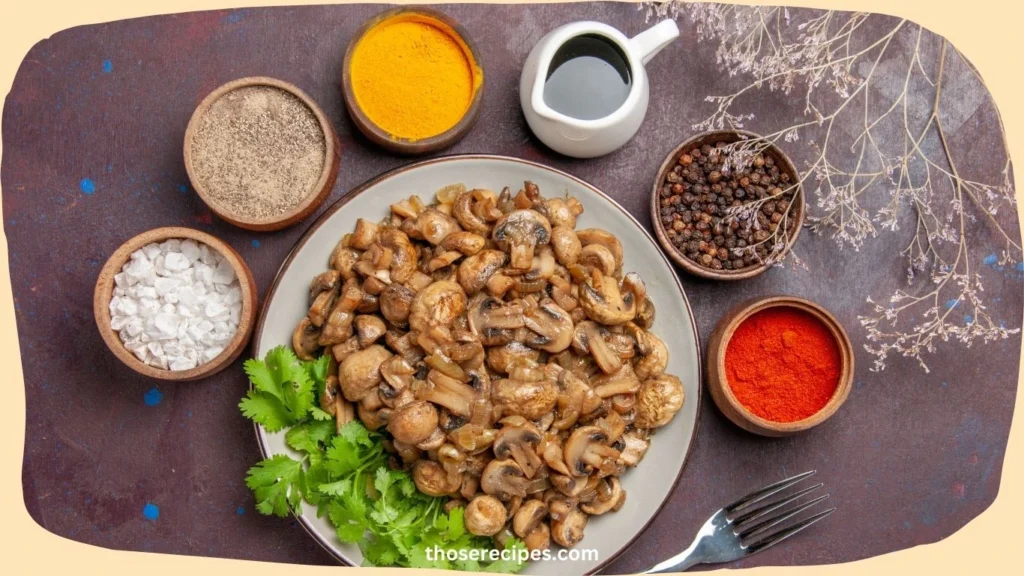
Tips for Cooking lion’s mane mushroom
When preparing a lion’s mane mushroom recipe, small details can make a big difference in the final flavor and texture. These cooking tips will help you master the art of working with this gourmet ingredient, ensuring your dishes turn out perfect every time.
Enhance the Flavor
- Pair with Bold Seasonings: While Lion’s Mane mushrooms have a subtle seafood-like flavor, they shine when paired with bold seasonings like garlic, rosemary, or smoked paprika. A sprinkle of nutritional yeast can add a cheesy, savory note to vegan dishes.
- Use Acid for Balance: Adding a splash of lemon juice or vinegar at the end of cooking enhances the mushroom’s natural sweetness and prevents the dish from feeling too rich. For a refreshing side to pair with your lion’s mane mushroom recipe, try the Din Tai Fung Cucumber Salad Recipe, which offers a light, tangy complement to the earthy flavors of the mushrooms.
Preserve the Texture
- Don’t Overcook: Overcooking can make the mushrooms mushy. Sauté them quickly over medium-high heat to retain their firm, meaty texture.
- Avoid Waterlogging: Since Lion’s Mane mushrooms can absorb water, always clean them with a damp cloth or soft brush rather than soaking them in water.
Cooking Tools Matter
- Use a Non-Stick or Cast-Iron Skillet: These pans are ideal for achieving a golden-brown crust on the mushrooms without sticking.
- Work in Batches: If you’re cooking a large quantity, avoid overcrowding the pan. This ensures even cooking and prevents steaming instead of browning.
Experiment with Cooking Methods
- Try different methods such as grilling, roasting, or even air-frying to bring out unique textures and flavors in your lion’s mane mushroom recipe. Each technique highlights the mushroom’s versatility in new and exciting ways.
By following these tips, you’ll not only elevate your cooking skills but also unlock the full potential of Lion’s Mane mushrooms, creating dishes that are as satisfying as they are delicious.
How to Store lion’s mane mushroom
Proper storage is crucial to preserve the freshness and flavor of your mushrooms, ensuring they remain a perfect ingredient for your next lion’s mane mushroom recipe. Here’s a comprehensive guide to keeping your Lion’s Mane mushrooms fresh and ready to use, whether they’re raw or cooked.
Fresh Storage
- Refrigeration Tips:
- Store fresh Lion’s Mane mushrooms in the refrigerator to keep them fresh for up to a week.
- Use a paper bag or wrap them loosely in a paper towel before placing them in the fridge. This helps absorb excess moisture and prevents them from becoming slimy.
- Avoid using plastic bags or airtight containers, as they can trap moisture and cause the mushrooms to spoil more quickly.
- Ideal Storage Temperature:
- Keep the mushrooms in the crisper drawer or a cool, dry part of the refrigerator.
Cooked Storage
- Refrigerating Leftovers:
- If you’ve prepared a lion’s mane mushroom recipe and have leftovers, allow the dish to cool completely before storing.
- Place the cooked mushrooms in an airtight container and store them in the fridge for up to 3–4 days.
- Reheating Tips:
- When reheating, use a skillet over medium heat to restore the mushrooms’ texture and flavor. Avoid microwaving, as it can make them rubbery.
Freezing Option
- Blanching Before Freezing:
- To freeze Lion’s Mane mushrooms for longer storage, blanch them first. Boil them for 1–2 minutes, then transfer them immediately to an ice bath to stop the cooking process.
- Drain and pat them dry before freezing.
- Freezing Instructions:
- Place the blanched mushrooms in a single layer on a baking sheet and freeze until solid. Then transfer them to a freezer-safe bag or container. Properly frozen mushrooms can last up to six months.
- Using Frozen Mushrooms:
- Thaw the mushrooms in the refrigerator overnight before cooking, or use them directly from frozen in soups or stews.
By following these storage techniques, you can extend the life of your Lion’s Mane mushrooms and always have this gourmet ingredient on hand for your favorite lion’s mane mushroom recipe. Proper storage ensures the mushrooms retain their flavor, texture, and nutritional benefits, no matter when you use them.
FAQs About lion’s mane mushroom recipe
What is the best way to eat Lion’s Mane?
The best way to enjoy Lion’s Mane mushrooms is by cooking them to enhance their naturally mild and slightly seafood-like flavor. Popular methods include sautéing, roasting, or pan-frying. Incorporating them into a lion’s mane mushroom recipe such as a stir-fry, soup, or even a sandwich showcases their versatility. When cooked, the mushroom absorbs seasonings beautifully and develops a tender, meaty texture. Adding complementary ingredients like garlic, olive oil, or soy sauce further elevates its taste.
What is the downside of Lion’s Mane?
While Lion’s Mane mushrooms are celebrated for their culinary and health benefits, there are a few potential downsides. For some individuals, consuming Lion’s Mane may cause mild allergic reactions, such as skin irritation or upset stomach. Additionally, the mushroom’s limited availability and high cost can be a downside for those trying to incorporate it into regular meals. However, when carefully sourced and prepared in a delicious lion’s mane mushroom recipe, these drawbacks are minimal.
Is Lion’s Mane like Adderall?
Lion’s Mane mushrooms are sometimes compared to Adderall due to their potential cognitive benefits, such as improved memory and focus. However, the comparison is not entirely accurate. Unlike Adderall, which is a prescription medication with stimulant properties, Lion’s Mane mushrooms contain natural compounds like hericenones and erinacines that may promote brain health and stimulate nerve growth. These effects are more gradual and subtle, making Lion’s Mane a holistic option for those seeking cognitive support while enjoying it in a flavorful lion’s mane mushroom recipe.
What not to mix Lion’s Mane with?
While Lion’s Mane mushrooms pair well with many ingredients, avoid mixing them with overly strong flavors that can overpower their delicate taste. Ingredients like excessive vinegar or highly spicy sauces might mask the mushroom’s natural sweetness and tender texture. Additionally, if you’re taking medications for neurological or cognitive issues, consult your healthcare provider to ensure that Lion’s Mane doesn’t interfere with your treatment. Otherwise, a well-balanced lion’s mane mushroom recipe with complementary flavors ensures the best culinary experience.
These FAQs aim to answer common questions and provide insights into making the most of your lion’s mane mushroom recipe while addressing any concerns or misconceptions.
Health Benefits of lion’s mane mushroom
Including Lion’s Mane mushrooms in your diet isn’t just a culinary treat—it’s a health-conscious choice. This superfood has gained attention for its remarkable nutritional properties and potential medicinal benefits. Adding them to your lion’s mane mushroom recipe not only enhances flavor but also supports your overall well-being.
Rich in Antioxidants
Lion’s Mane mushrooms are packed with antioxidants, which help combat oxidative stress in the body. This can reduce inflammation and protect cells from damage, promoting healthier skin, better energy levels, and overall vitality.
Supports Brain Health
Lion’s Mane mushrooms contain unique compounds called hericenones and erinacines, which may stimulate the growth of nerve cells in the brain. These compounds are believed to support memory, focus, and cognitive function. Regularly incorporating Lion’s Mane into meals may provide a natural boost to mental clarity and help combat age-related cognitive decline.
Boosts Immune System
The mushroom’s high beta-glucan content strengthens the immune system by activating important defense mechanisms. Adding Lion’s Mane to your diet can help your body fend off illnesses and maintain overall health.
Supports Gut Health
Lion’s Mane mushrooms have been shown to promote a healthy gut by protecting the stomach lining and potentially reducing the risk of ulcers. This makes them an excellent addition to your recipes if you’re looking to support digestive health.
May Lower Risk of Chronic Diseases
The anti-inflammatory and antioxidant properties of Lion’s Mane mushrooms may contribute to reducing the risk of chronic diseases such as heart disease, diabetes, and certain cancers. Preparing a healthy lion’s mane mushroom recipe is an easy and delicious way to support long-term health.
From brain health to immune support, the benefits of Lion’s Mane mushrooms go beyond the kitchen. With every bite of a carefully crafted lion’s mane mushroom recipe, you’re nourishing your body and mind, making this mushroom a powerhouse addition to your meals.
Conclusion
Unlock the Culinary Magic of lion’s mane mushroom recipe
Lion’s Mane mushrooms are more than just a culinary ingredient—they’re a gateway to gourmet cooking and health-conscious living. Whether you’re a seasoned chef or a home cook exploring new flavors, crafting a lion’s mane mushroom recipe offers endless possibilities. Their unique texture, mild seafood-like taste, and exceptional nutritional benefits make them a standout choice for anyone looking to elevate their meals.
Why You Should Try This Versatile Ingredient
From sautéing and roasting to incorporating them into soups, stews, or stir-fries, Lion’s Mane mushrooms can adapt to almost any cooking style. Not only do they serve as a delicious meat or seafood substitute, but they also bring a range of health benefits, from supporting brain health to boosting the immune system. By following proper preparation, cooking, and storage techniques, you can ensure your recipes consistently turn out delicious and satisfying.
Your Next Steps
Ready to bring the extraordinary into your kitchen? Start with the simple steps and tips outlined in this guide, and don’t be afraid to get creative with variations. Experiment with seasonings, explore international flavors, and most importantly, enjoy the process of making your own lion’s mane mushroom recipe.
If this guide has inspired you, don’t keep it to yourself! Share your creations, encourage friends and family to explore Lion’s Mane mushrooms, and continue discovering the endless potential of this remarkable ingredient. Let every bite be a celebration of flavor, health, and creativity.

